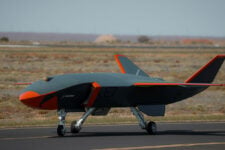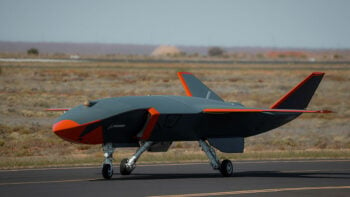 WASHINGTON — The House Armed Services strategic forces subcommittee has given the thumbs up to the Defense Department’s nascent plan to create a commercial “space reserve” to bolster military satellite capabilities during wartime.
WASHINGTON — The House Armed Services strategic forces subcommittee has given the thumbs up to the Defense Department’s nascent plan to create a commercial “space reserve” to bolster military satellite capabilities during wartime.
“The Secretary of Defense may establish and carry out a program to be known as the ‘Commercial Augmentation Space Reserve’ program. Under the program, the Secretary may include in a contract for the procurement of space products or services one or more provisions under which a qualified contractor agrees to provide additional space products or services to the Department of Defense on an as-needed basis under circumstances determined by the Secretary,” states the subcommittee’s portion of the draft fiscal 2025 space policy bill.
DoD stated its intent to pursue CASR, first initiated by the Space Force, in its new Commercial Space Integration Strategy issued in April. The strategy explained that the Pentagon wants to “ensure” its “access” to commercial capabilities, including “being able to surge commercial capacity to meet military requirements and capability needs across the spectrum of conflict.”
The draft 2025 National Defense Authorization Act language, made public today, would limit participation in CASR to US firms and US citizens, with the language stressing that any new contracts under CASR must be compatible with Pentagon security requirements, including those surrounding access to classification.
Further, the HASC subcommittee requires Air Force Secretary Frank Kendall, in coordination with the Office of the Secretary of Defense, to engage a federally funded research and development center to study “the availability and adequacy of commercial insurance to protect the financial interests of contractors providing support services” to the US military in light of increased risks. This includes whether any lack of commercial insurance access could be filled in via the government with policies similar to those provided in the maritime and air domain.
This issue of shutter control and financial compensation, including indemnification, has been a key debate in the Space Force’s CASR effort.
The HASC subcommittee has long been pushing the Pentagon and the Space Force to move out more quickly and to put more resources toward the use of commercial space systems to rapidly improve the resiliency of vulnerable US national security space systems.
The draft 2025 NDAA language continues that trend, and piles on with new demands. Besides the CASR language, the draft bill would force DoD to create a new pilot project designed to kickstart its nascent plans to create a so-called hybrid space architecture linking national security, commercial, civil and allied satellites into a massive mesh network.
Such hybrid architectures that “leverage a mixture” of space assets “across multiple constellations are critical to modern warfighting and implementing new warfighting concepts,” including the Joint All Domain Command and Control (JADC2), the lawmakers assert.
“Beginning in fiscal year 2025, the Commander of the Space Systems Command of the Space Force shall carry out a pilot program to demonstrate a hybrid space architecture,” the draft bill states, that must include “at least one military satellite communications system, such as the Wideband Global Satcom system or the Micro Geostationary Earth Orbit system.”
Space Systems Command is the Space Force’s primary acquisition command, headquartered in Los Angeles, Calif.
The Wideband Global Satcom constellation, comprised of 10 communications satellites based in geosynchronous orbit (GEO), already has nine partner nations: Australia, Canada, Denmark, Belgium, Luxembourg, the Netherlands, New Zealand, the Czech Republic and Norway.
The Space Force in October 2023 solicited commercial industry on the feasibility of creating a contractual vehicle for obtaining services from SATCOM operators with micro-satellites in GEO. On April 19, it issued a companion request for information asking about potential support for DoD’s own development of a GEO constellation of many small birds, under an effort called the “Protected Tactical SATCOM — Global (PTS-G) Program.”
The HASC intends to mark up the FY25 NDAA on May 22.





















